photocollection.alonsorobisco.es
1. Albums
3. Blog: 3239 posts
6. Links
7. Sitemap
8. Books
9. Contact
photocollection.alonsorobisco.es
1. Albums
3. Blog: 3239 posts
6. Links
7. Sitemap
8. Books
9. Contact
SEPTIEMBRE 2014
domingo, 28 de septiembre de 2014
Turismo y fotografía. Documentos y links. Tourism and photography. Documents and links. Spain XIX-XX century
.......El turismo nace porque la fotografía crea lugares añorados y auténticos que, por verdaderos, demandan nuestra presencia en el mirador correspondiente para su constatación, para personalizarlos y poseerlos..
........Para el hombre contemporáneo el paisaje es aquello que queda enmarcado por la ventana del tren o del coche. Apenas queda ya una naturaleza ni cosifi cada ni transformada por la acción del hombre.
Estas frases, entresacadas del excelente texto, cuya lectura recomiendo
sirven como introducción a los documentos y links que incluyo en este post
La fotografía de turismo, la realizada para mostrar la imagen de como es una ciudad o país está presente desde los primeros tiempos, desde el siglo XIX.
La más conocida es la que da lugar a los llamados Álbumes Grand Tour donde se recogían las fotos de los lugares que se visitan y se añadían, a veces, las propias fotos de estos primeros turistas.
Pero también hay otra fotografía de turismo que ha estado parcialmente oculta e incluso menospreciada como es la fotografía que se usó para atraer a los turistas en la España del siglo XX.
Efectivamente, hay una serie de grandes fotógrafos que se vieron obligados, o quisieron voluntariamente, a recoger con su cámara los diferentes lugares de España. Es decir sus tres apartados fundamentales:
Arquitectura: Edificios antiguos como Catedrales o Monasterios principalmente.
Paisaje. Tanto el urbano de las grandes ciudades con sus calles, como el rural destacando lo mas importante del mismo
Gentes. Nos muestran como vivían y trabajaban en aquel tiempo.
Pues bien en este post quiero recoger una muestra de la bibliografía ya disponible en la Web en forma de: Dossier, tesis doctorales, artículos etc.
Muchas veces tienen un punto de vista local, entendiendo por local un lugar determinado siquiera sea el pueblo mas pequeño ( y no por ello menos bonito) de España.
Además hay que hacer especial hincapié en la gran nómina de fotógrafos que trabajaron para el Patronato Nacional de Turismo y la Dirección General de Turismo. En estos casos hay que mencionar que su obra se mostró en folletos y guías de no mucha calidad editorial. Claro que , a veces, se incorporaban a carteles de mucha mejor calidad.
Tampoco hay que olvidar a aquellas editoriales, por así llamarlas, que hicieron esa labor de empresa, como es por ejemplo las fotos de Roisin o del archivo Loty e incluso las de Wunderlich, o el gran archivo Mas.
No quiero decir con esto que todas estas fotos fueran buenas pues, a veces, el encargo pesa y corta la inspiración artística, sino que entre ellas hay muchas fotos de gran calidad y que todavía no son suficientemente conocidas.
En fin, estos datos son una mera introducción a su estudio y conocimiento.
http://www.docutren.com/HistoriaFerroviaria/PalmaMallorca2009/pdf/050111_Alonso.pdf
http://e-spacio.uned.es/fez/eserv.php?pid=bibliuned:ETFSerieVII-2012-25-1070&dsID=Documento.pdf
EXPOSICIÓN TEMPORAL
"VISITE ESPAÑA: LA MEMORIA RESCATADA"
20 de febrero – 18 de mayo
Entrada gratuita
El Museo del Romanticismo y la Biblioteca Nacional de España presentan sendas exposiciones en torno a la historia del turismo, un recorrido gráfico desde los viajeros románticos hasta la década de 1940. En nuestra sala de exposiciones temporales presentamos la muestra fotográfica dedicada a la Comisaría Regia de Turismo, una institución creada a principios de siglo por Benigno de la Vega Inclán (fundador del Museo Romántico) para fomentar el turismo cultural.
Sedes: Museo del Romanticismo y Biblioteca Nacional de España
http://www.bne.es/es/Actividades/Exposiciones/Exposiciones/exposiciones2014/visitespana.html
http://www.mcu.es/principal/docs/novedades/2014/dossier_prensa.pdf
La figura del Marqués de la Vega Inclán como comisario regio de Turismo. Introducción a la Comisaría Regia de Turismo.
http://revistas.ucm.es/index.php/DCIN/article/viewFile/DCIN0909110133A/18792
http://censoarchivos.mcu.es/CensoGuia/fondoDetail.htm?id=1097814
Catálogo Monumental de España en Google Earth
El Patronato Nacional de Turismo se crea en 1928, como sucesor de la Comisión Nacional de Turismo (1905-1911) y de la Regia Comisaría de Turismo (1911-1928). Su propósito fue la formación y divulgación de itinerarios de viajes y la publicación y difusión de guías en varios idiomas, todo ello destinado a turistas extranjeros de élite, a fin de facilitar el turismo y obtener divisas, además de la conservación de la riqueza artística, monumental y pintoresca de España. A estas funciones, ya definidas por sus antecesores, añade el estudio de los medios para la implantación de Escuelas de Turismo, para la formación de personal, la creación de centros de información en el extranjero y centros de turismo en España, que actuaran en colaboración con todas las organizaciones que contribuyeran al fomento del turismo.
La Serie Patronato Nacional de Turismo engloba un importante volumen de fotografías y otra documentación gráfica: carteles de información de actividades, folletos informativos, etc. En total, 344 cajas, que incluyen 80.975 fotografías, 49 sobres de índices fotográficos y 7 álbumes.
La fracción más antigua de la serie, denominada Catálogo Monumental de España, se realizó entre los años 1928, fecha de creación del Patronato, y 1936, momento en que las actividades de promoción del turismo quedan interrumpidas por la Guerra Civil. Este catálogo se compone de 3.861 fotografías de diferentes lugares y tema vario, pero siempre relacionado con la actividad turística.
Algunos fotógrafos de este católogo son: Cevallos, Collada, Desfilis, Duomarco, Garzón, Hauser y Menet, Ksado, L.Roisin, Laurent, Linares, LLadó, Loty, Maisch, Marín, Marqués de Santa María del Villar, Martínez Sánchez, Archivo Mas, Merletti, Mora Insa, Olivenza, Pacheco, Ribera LLopis, Ruiz Vernacci, Samot, Sarabia, Vadillo, Wünderlich,Zerkowitz
http://www.mecd.gob.es/cultura-mecd/areas-cultura/archivos/mc/aga/bases-de-datos/cmege.html
http://photoblog.alonsorobisco.es/2014/01/fotografia-albumes-grand-tour-vintage.html
Catering to this influx of European and American tourists, a growing number of travel photographers documented historical monuments and archeological sites, as well as scenes of daily life.
http://web.princeton.edu/sites/Archaeology/rp/globalviews/index.html
http://expositions.bnf.fr/veo/reve/index3.htm
http://www.macba.cat/es/imagen-de-espanya-fotografia-y-turismo-1951-1977
http://fotografiaantiguadecantabria.blogspot.com.es/2013/12/las-rutas-de-la-guerra-turismo-de.html
http://www.iet.tourspain.es/img-iet/revistas/ret-163-164-2005-pag55-79-92459.pdf
Como alternativa a dicha historiografía se propone una revisión en paralelo de las imágenes procedentes de la industria turística con las producciones artísticas surgidas en torno a la realidad del turismo –concretamente, los proyectos fotográficos de Francesc Català-Roca y Xavier Miserachs sobre la Costa Brava. ¿Se puede hablar de una iconografía turística de la Costa Brava? ¿Cuánto hay de mascarada y cuánto de retrato en ella?
El Departamento de Cultura y Turismo del Gobierno de Navarra ha editado la obra El fotógrafo Santa María del Villar y Navarra, sobre la figura de este pionero de la fotografía paisajística en España y destacado documentalista del Camino de Santiago. El autor de la obra es el profesor Jorge Latorre Izquierdo texto con 104 reproducciones de fotografías de Santa María del Villar.
http://www.navarra.es/home_es/Actualidad/Sala+de+prensa/Noticias/2005/03/07/0703cu61.htm
La sede del Instituto Cervantes exhibe un centenar de carteles y programas publicitarios creados en torno a 1930
http://www.cervantes.es/sobre_instituto_cervantes/prensa/2011/noticias/expo_alcala_cartel_turismo2.htm
Visite Galicia. Estampas de Ksado.
Visite Galicia es una colección de viñetas editada durante los años treinta del siglo XX por el fotógrafo Luis Casado Fernández y complementaria de otras como Estampas compostelanas o Estampas de Galicia . La Biblioteca Tomás Navarro Tomás del CSIC conserva una colección de 316 viñetas de la serie Visite Galicia. Es una colección incompleta pero muy amplia a juzgar por los datos que se conocen de ella.
http://biblioteca.cchs.csic.es/visite_galicia/historia.html
http://publica.webs.ull.es/upload/REV%20LATENTE/5%20-%202007/08%20Rodr%C3%ADguez.pdf
La exposición Darrere les passes d'Artur Osona muestra imágenes del fondo del Arxiu Històric Fotogràfic de l'Institut d'Estudis Fotogràfics de Catalunya y de la de la colección particular de Ferran Barba. Las fotografías muestran las poblaciones y las montañas del Montseny en el primer tercio del siglo XX.
http://www.iefc.es/documentacio/galeria-montseny/index-montseny.php
http://www.iefc.es/documentacio/galeria-viatges-turisme/index-viatges-turisme-cast.php
El archivo fotográfico Loty fue creado en Madrid en 1927 a iniciativa de Concepción López, representante y editora, y del comerciante de papeles heliográficos y editor de fotografías Charles Alberty Jeanneret. Ambos contrataron al fotógrafo portugués António Passaporte, que entre 1927 y 1936 tomó imágenes de vistas urbanas, monumentos, paisajes y tipos populares de toda España, principalmente para su comercialización en tarjetas postales.
El Archivo Wunderlich, adquirido en 2008, contiene cerca de 45.000 negativos y positivos en distintos formatos, obra del fotógrafo Otto Wunderlich (Stuttgart, 1887- Madrid, 1975). Incluye además cámaras fotográficas, objetivos y la ampliadora del estudio.
Formado en Alemania, Wunderlich se trasladó a España en 1914 y desarrolló una carrera fotográfica en la que, junto a proyectos de encargo para instituciones culturales y empresas del sector industrial, destaca la fotografía de carácter personal, que constituye su legado más valioso: una colección de imágenes de paisajes, escenas tradicionales y tipos populares que documentan, con admirable precisión técnica y exquisita sensibilidad, la realidad española de los dos primeros tercios del siglo XX.
Adquirido por el Estado en 1975, a la muerte de Joaquín Ruiz Vernacci, se trata de uno de los archivos más extraordinarios de la historia de la fotografía en España.
Fue creado por el francés Jean Laurent (Garchizy, 1816-Madrid, 1886), uno de los grandes pioneros de la fotografía en España y Portugal. Su actividad fue continuada por Catalina Melina Dosch y Alfonso Roswag hasta 1900, por Joseph Jean Marie Lacoste Borde hasta 1915 (durante algún tiempo en sociedad con el también fotógrafo Ángel Redondo de Zúñiga), Juana Roig Villalonga y, desde diciembre de 1930, por Joaquín Ruiz Vernacci (1892-1975).
El Archivo Pando conserva la amplia obra del fotógrafo Juan Miguel Pando Barrero (1915-1992), desarrollada a lo largo de más de cincuenta años y continuada por su hijo, Juan Pando Despierto, hasta 2003.
Discípulo de Mariano Moreno, Pando Barrero realizó en su juventud magníficas fotografías de la Guerra Civil Española (fue contratado por la Associated Press) y de la larga y dolorosa posguerra.
Desde 1940 hasta 1993 la Agencia Pando realizó trabajos para una amplísima gama de clientes: museos, galerías, coleccionistas y artistas, industrias de ingeniería (hidroeléctricas, distribución eléctrica, petroquímicas y otras), encargos de publicidad comercial e imagen empresarial, fotografía de arquitectura, etc.
El Instituto Amatller de Arte Hispánico pone a disposición de los investigadores e historiadores del arte una biblioteca con 26.000 títulos y un archivo fotográfico y una fototeca con 350.000 negativos
Selección de imágenes de España pertenecientes a la colección Roisin del Archivo Histórico Fotográfico del IEFC.
Catalogo, pequeño documento, de una exposición con fotos de Roisin.
La tarjeta postal más antigua de España fue impresa por la Casa Hauser y Menet y es una composición fotográfica que, bajo el título “Recuerdo de Madrid”, reproduce cuatro vistas de la ciudad; circuló de Madrid a Barcelona el día 21 de octubre de 1892. Se conoce otro ejemplar, enviado de Madrid a Pisa el 1 de noviembre de 1892.
Definición Diccionario Real Academia Española: “La que se emplea como carta, frecuentemente con ilustración por un lado”
Sobre fotografía y turismo en el siglo XIX es recomendable la lectura de un excelente artículo, en inglés, que nos narra la concepción mercantil de los estudios fotográficos de James Valentine y Georges Washington Wilson
Scotland’s Industrial Photographic Production, Technologies andDistribution: The Legacy of James Valentine and George Washington Wilson
The expansion of tourism cannot be solely attributed to the Royal presence in Scotland: it was also a question of convenience. For example, tourism in Fife, a region isolated between the Firth of Forth and Firth of Tay, began to expand in the 1890s following the construction of the Forth Rail Bridge and steamers. These innovations in transportation made Fife accessible as a holiday destination and further encouraged the existing interest centred on golf /sporting tourism. Critically, the creation of products such as photography and souvenirs was not uniquely a reactionary process that answered the market demands created by tourists. Rather, the photographic industry also carried the ability to shape and expand the public’s interest in Scottish destinations and culture. The association between tourism and commercial photography was a symbiotic one, as both Wilson and Valentine thrived on the tourist market and yet also aided in its perpetuation. To this end, both advertised widely in publications like the famed J. Watson Lyall’s Sportsman’s Guide to the rivers, Lochs, Moors and Deer Forests of Scotland,Local guidebooks also used their material, andLocal guidebooks also used their material, and in turn, Valentine’s and Wilson’s images were further sought by other publishers and authors.
La expansión del turismo no puede atribuirse únicamente a la presencia Real de Escocia, sino que también era una cuestión de conveniencia. Por ejemplo, el turismo en Fife, una región aislada entre el Firth of Forth y Firth of Tay, comenzó a expandirse en la década de 1890 a raíz de la construcción del puente y vapores Forth Rail. Estas innovaciones en el transporte hicieron Fife accesibles como destino de vacaciones y además alienta el interés existente centrado en el turismo de golf / deportivo. Fundamentalmente, la creación de productos como la fotografía y los recuerdos no era únicamente un proceso reaccionario que respondiera a las exigencias de mercado creadas por los turistas. Por el contrario, la industria fotográfica también llevó a la capacidad de dar forma y expandir el interés del público en los destinos y la cultura escocesas. La asociación entre el turismo y la fotografía comercial era simbiótica, ya que tanto Wilson y Valentine prosperaron en el mercado turístico y, sin embargo también ayudados en su perpetuación. Con este fin, tanto anuncian ampliamente en publicaciones como la Guía del famoso J. Watson de Lyall del Deportista a los ríos, lagos, Moros y Deer bosques de Escocia, guías locales también utilizan su material, guías andLocal también utilizaron su material, ya su vez, de San Valentín y las imágenes de Wilson se buscaron más por otros editores y autores.
Photograph of tourism, made to display the image as a city or country is present from the earliest times, since the nineteenth century.
The best known is what gives rise to the so-called Grand Tour albums where the pictures of the places visited were added and, sometimes, the very first pictures of these tourists were gathered.
But there is also another picture of tourism that has been partially concealed even scorned as is the photograph that was used to attract tourists in Spain in the twentieth century.
Indeed, there are a number of great photographers who were forced or voluntarily wanted to pick up his camera the different places of Spain. Ie its three main sections:
Architecture: Ancient buildings as cathedrals or monasteries mainly.
landscape. From the city of the big cities with their streets, such as rural highlighting the most important of the same
Gentes. We show how they lived and worked at that time.
Well in this post I want to take a sample of the literature already available on the Web in the form of: Dossier, dissertations, articles etc.
They often have a local point of view, meaning a certain place even locally is the smallest (and no less beautiful) village in Spain.
We also have to place special emphasis on the great list of photographers who worked for the National Tourist Board and the Directorate General of Tourism. In these cases it is necessary to mention that his work was shown in brochures and guides not much editorial quality. Of course, sometimes, were incorporated into signs of much better quality.
Nor should we forget those publishers, so to call them, they did the work of business, such as photos or Loty Roisin file and even Wunderlich, or large file Mas.
I do not mean by this that all these photos were good because sometimes the weight and cut custom artistic inspiration, but includes numerous high quality photos that are not yet sufficiently known.
Finally, these data are a mere introduction to his study and knowledge.
Contribution of Railways in the opening stage of tourism in Spain.
http://www.docutren.com/HistoriaFerroviaria/PalmaMallorca2009/pdf/050111_Alonso.pdf
Madrid tourist posters from 1900 to 1977. PhD Thesis
http://www.google.es/url?sa=t&rct=j&q=&esrc=s&source=web&cd=1&ved=0CCoQFjAA&url=http%3A%2F%2Feciencia.urjc.es%2Fbitstream%2F10115%2F11648%2F1%2FTesis.pdf&ei=Fb8GVP-WBYjT0QX3iIGIDA&usg=AFQjCNG3OIOWATxz4-qmr0SansM9UKazmw&sig2=F6B2bSa3qCke3D1TOxIKNw&bvm=bv.74115972,d.d2k&cad=rja
Madrid, postwar tourist destination. Madrid posters published by the
Department of Tourism 1939-1951
http://e-spacio.uned.es/fez/eserv.php?pid=bibliuned:ETFSerieVII-2012-25-1070&dsID=Documento.pdf
Visit Spain. Memory rescued. BNE.
TEMPORARY EXHIBITION
"VISIT SPAIN: THE MEMORY RESCUED"
February 20 - May 18
Free admission
The Museum of Romanticism and the National Library of Spain presented two exhibitions about the history of tourism, a graphic journey from romantic travelers to the 1940s in our temporary exhibition presented a photo exhibition dedicated to the Regia police station Tourism, an institution created at the beginning of the century by Benigno de la Vega Inclán (founder of the Romantic Museum) to promote cultural tourism.
Venues: Museum of Romanticism and National Library of Spain
http://www.bne.es/es/Actividades/Exposiciones/Exposiciones/exposiciones2014/visitespana.html
VISIT SPAIN. RESCUED THE MEMORY OF SPAIN NATIONAL LIBRARY MUSEUM OF ROMANCE
http://www.mcu.es/principal/docs/novedades/2014/dossier_prensa.pdf
The figure of the Marquis de la Vega Inclán as royal commissioner of Tourism. Introduction to Tourism Office Regia.
Photography and rail: a reflection on the graphic fonts
railroad, conservation and study. Trains Magazine.
http://www.museodelferrocarril.org/archivo/pdf/archivoymemoria03/3J_Comunicacion_08_Cuellar%20y%20otros.pdf
Regular publications from the National Network of Spanish Railways RENFE (1941-2005).
http://revistas.ucm.es/index.php/DCIN/article/viewFile/DCIN0909110133A/18792
File Ministry of Information and Tourism.
http://censoarchivos.mcu.es/CensoGuia/fondoDetail.htm?id=1097814
Monumental catalog Spain in Google Earth
National Tourist Board was created in 1928 as successor to the National Commission for Tourism (1905-1911) and the Regia Tourism Office (1911-1928). Its purpose was the formation and dissemination of travel itineraries and the publication and dissemination of guidance in several languages, all aimed at foreign tourists elite to facilitate tourism and foreign exchange, and the preservation of artistic wealth, monumental and picturesque Spain. These functions, as defined by their predecessors, adds the study of ways to implement tourism schools for the training of personnel, the establishment of information centers abroad and tourism centers in Spain, to act together with all organizations that contribute to the promotion of tourism.
The National Tourism Board Series encompasses a large volume of photographs and other graphic documentation: information activity posters, brochures, etc. In total, 344 cases, including 80,975 photographs, photographic rates on 49 and 7 albums.
The oldest portion of the series, called Monumental catalog Spain, was conducted between 1928, the date of creation of the Board, and 1936, when the tourism promotion activities are interrupted by the Civil War. This catalog is composed of 3,861 photographs from different places and various theme, but always related to tourism.
http://www.mecd.gob.es/cultura-mecd/areas-cultura/archivos/mc/aga/bases-de-datos/cmege.html
Photo Albums Grand Tour The Grand Tour Vintage photography albums
http://photoblog.alonsorobisco.es/2014/01/fotografia-albums-grand-tour-vintage.html
Princeton Edu. Grand Tour.
Catering to this Influx of European and American tourists, a growing number of travel photographers documented historical monuments and archeological sites, as well as scenes of daily life.
http://web.princeton.edu/sites/Archaeology/rp/globalviews/index.html
Le "Grand Tour" à l'origine du tourisme Western. BNF. Voyage en Orient
http://expositions.bnf.fr/veo/reve/index3.htm
Image of Spain. Photography and Tourism, 1951-1977. MACBA.
http://www.macba.cat/es/imagen-de-espanya-photography-and-tourism-1951-1977
BNE Virtual exhibition
http://www.bne.es/es/Micrositios/Exposiciones/Tesoros_descubierto/Exposicion/Seccion2b/Obra15.html?seccion=6&obra=2&origen=
Roads of War: Tourism in the Spanish Civil War.
http://fotografiaantiguadecantabria.blogspot.com.es/2013/12/las-tours-of-war-tourism-de.html
Geography, literature and ideology in the second half of the twentieth century: the "Guide Spain" by Ediciones Destino
http://www.google.es/url?sa=t&rct=j&q=&esrc=s&source=web&cd=2&ved=0CCwQFjAB&url=http%3A%2F%2Festudiosgeograficos.revistas.csic.es%2Findex.php%2Festudiosgeograficos%2Farticle%2Fdownload%2F94%2F91&ei=CBUIVIeNNMeXat29gpAK&usg=AFQjCNEyXpfaDZkP08UrYBn2aVsuH2Y-iQ&sig2=DkjuAMqXbz9Bw-smv1hSyw&bvm=bv.74649129,d.d2s&cad=rja
BNE Books travelers and travel the XVI-XIX
http://www.bne.es/es/Micrositios/Guias/Viajes/resources/docs/Guia_Libros_de_de_viaje_y_viajeros_Siglos_XVI-XIX.pdf
THE SPANISH TOURISM MANAGEMENT BETWEEN 1936 AND 1951.
TOURISM IN THE SERVICE OF POLITICAL PROPAGANDA
http://www.iet.tourspain.es/img-iet/revistas/ret-163-164-2005-pag55-79-92459.pdf
TITLE: Sources for a history of Spanish tourism. Documentary Funds General Administration Archive
http://www.aehe.net/xcongreso/pdf/sesiones/turismo/fuentes%20para%20una%20historia%20del%20turismo%20espanol.pdf
Tourism, Art and Masquerade in Spain: the case of the Costa Brava
As an alternative to such historiography reviews proposed parallel
Images from the tourism industry with emerging artistic productions around the reality of tourism-namely, photographic projects Francesc Català-Roca and Xavier Miserachs
on the Costa Brava. Can you talk about a tourist iconography of the Costa Brava? How much and how Masquerade portrait in her?
http://www.google.es/url?sa=t&rct=j&q=&esrc=s&source=web&cd=18&ved=0CEQQFjAHOAo&url=http%3A%2F%2Frevistas.ucm.es%2Findex.php%2FANHA%2Farticle%2Fdownload%2F41902%2F39913&ei=aRcIVN-fNtPmaMvZgcAO&usg=AFQjCNGvSYJM3JZ-dN3TGw-5rQlfA2nHeA&sig2=Uc3ztJWTiJ_00t7cerX4QQ&bvm=bv.74649129,d.d2s&cad=rja
MEMORIES OF THE COSTA BRAVA (book with photographs of Catala Roca and Xavier Miserachs)
Photographer Santa María del Villar and Navarre.
The Department of Culture and Tourism of the Government of Navarra has edited the work Photographer Santa María del Villar and Navarre, on the figure of this pioneer of landscape photography in Spain and a leading documentarian of the Camino de Santiago. The author of the work is Professor Jorge Latorre Left Text with 104 reproductions of photographs of Santa María del Villar.
http://www.navarra.es/home_es/Actualidad/Sala+de+prensa/Noticias/2005/03/07/0703cu61.htm
"The sign of tourism", a look at the origins of the tourist promotion of Spain
The headquarters of the Instituto Cervantes displays a hundred posters and advertising programs created around 1930
http://www.cervantes.es/sobre_instituto_cervantes/prensa/2011/noticias/expo_alcala_cartel_turismo2.htm
Visit Galicia. Patterns of Ksado.
Visit Galicia is a collection of cartoons published during the thirties of the twentieth century by photographer Luis Fernández Casado and others like additional prints or prints of Compostela Galicia. Tomás Navarro Tomás Library CSIC has a collection of 316 vignettes Visit Galicia series. It is an incomplete but very wide judging by what we know of her collection.
http://biblioteca.cchs.csic.es/visite_galicia/historia.html
PHOTO ILLUSTRATION AND TOURISM IN A MAGAZINE CANARY: HESPERIDES, 1926-1929
http://publica.webs.ull.es/upload/REV%20LATENTE/5%20-%202007/08%20Rodr%C3%ADguez.pdf
In the footsteps of Artur Osona. The Montseny of the first hikers and tourists
The exhibition passes them Darrere d'Artur Osona shows background images Fotogràfic Historic Archive of the Institute of Photographic Studies of Catalonia and the private collection of Ferran Barba. The photographs show the people and the mountains of Montseny in the first third of the twentieth century.
http://www.iefc.es/documentacio/galeria-montseny/index-montseny.php
Tourism in Europe a hundred years ago. Photographs of the Museu Frederic Marès and CBEFIs
http://www.iefc.es/documentacio/galeria-viatges-turisme/index-viatges-turisme-cast.php
Loty Archive
The photographic archive Loty was created in Madrid in 1927 at the initiative of Concepción López, representative and editor trader papers and blueprints photo editor Charles Alberty Jeanneret. Both hired Portuguese photographer António Passaporte that between 1927 and 1936 took images of city views, monuments, landscapes and popular types of all Spain, primarily for marketing postcards.
Given his extraordinary technical and artistic quality, archive photographs constitute a cultural Loty itself, plus a documentary and anthropological background of significant value and relevance.
Wunderlich Archive
The Wunderlich Archive, acquired in 2008, contains about 45,000 negatives and positives in different formats, the work of photographer Otto Wunderlich (Stuttgart, 1887 Madrid, 1975). It also includes cameras, objectives and enlarger study.
Trained in Germany, Wunderlich moved to Spain in 1914 and developed a photographic career that, with custom projects for cultural institutions and industrial companies, emphasizes personal photography, which is its most valuable legacy: a collection images of landscapes, traditional scenes and documenting popular types with remarkable technical precision and exquisite sensitivity, the Spanish reality of the first two thirds of the twentieth century.
File Ruiz Vernacci
Purchased by the state in 1975, after the death of Joaquín Ruiz Vernacci, it is one of the most extraordinary archives of the history of photography in Spain.
It was created by the French Jean Laurent (Garchizy, 1816-Madrid, 1886), one of the great pioneers of photography in Spain and Portugal. Its activity was continued by Catherine Melina Dosch and Alfonso Roswag until 1900, by Joseph Jean Marie Lacoste Edge until 1915 (for some time in partnership with a photographer Ángel Redondo Zuniga), Joan Roig Villalonga and since December 1930, by Joaquín Vernacci Ruiz (1892-1975).
The file consists of 40,000 glass negatives made by the said photographers between 1858 and 1960, as well as a collection of positive from different eras, enriched with various acquisitions and donations.
Pando file
The Pando Archives preserve the broad work of photographer Juan Miguel Pando Barrero (1915-1992) of, developed over more than fifty years and continued by his son, Juan Pando Awake, until 2003.
Disciple of Mariano Moreno, Pando Barrero made in his youth magnificent photographs of the Spanish Civil War (he was hired by the Associated Press) and the long and painful war.
From 1940 to 1993, the Agency conducted Pando works for a wide range of clients: museums, galleries, collectors and artists, engineering industries (hydro, electric distribution, petrochemical and other), orders for commercial advertising and corporate image, architectural photography, etc.
In parallel with this activity, Pando developed a personal interest in landscape photography and ethnographic during his travels in Spain and Morocco.
Amatller Institute of Hispanic Art (Photo Mas)
The Institute of Hispanic Art Amatller available to researchers and art historians a library with 26,000 titles and a photographic archive and a library with 350,000 negative
Roisin Lucien, 1884-1943
Selection of images from Spain belonging to the Roisin Historic Photo Archive Collection of CBEFIs.
Imagined Andalucía.
Catalog, small document, an exhibition of photos of Roisin
The picture postcard
The oldest Spain postcard was printed by the House and Hauser and Menet is a photographic composition, entitled "Remembrance of Madrid", playing four views of the city; circulated from Madrid to Barcelona on 21 October 1892 another copy, sent from Madrid to Pisa on November 1, 1892 is known.
The railway postcard: Railway Museum
Spanish Royal Academy Dictionary Definition: "The letter which is used as often with one hand illustration"
The Photographic Historical Archive CBEFIs has 800,000 photographs: Rhyming Project
Cuando uno hace un informe, a veces,es bueno empezar por el final.
Esto es lo que yo hago en esta ocasión.
Museo Sorolla. Son ustedes un magnífico museo y lo que es más, un museo muy agradable de ver, pasear de ESTAR.
Pues bien tienen ustedes Sorollas pero .....también veo que tienen estas joyas de la historia de la fotografía.
¿Y si las exponen temporalmente?
¿Y si, sencillamente, las cuelgan temporalmente todo a lo largo y ancho de las paredes del Museo, ?
Pienso que a Sorolla le hubiera gustado.
“Amigo buenísimo mío. Hoy llegaron a mi poder las hermosas fotografías de California, son un acicate enérgico, hay que pintar América!!”211
Tarjeta postal conservada en la Hispanic Society of America de Joaquín Sorolla en Madrid a Archer Milton Huntington con fecha de diciembre de 1909, publicada en VV.AA. (1998), p. 383.
Las tesis doctorales estan acercándose a la fotografía de igual o parecida manera que lo han hecho con la pintura.
Acabo de encontrar en la web una francamente buena.....pero tesis es decir muy amplio documento de 307 páginas dedicada a la fotografía y a Sorolla.
Es decir Sorolla como artista, aficionado, y la influencia o relación que tuvo la fotografía en su modo de realizar o ver la pintura.
Tesis Doctoral SOROLLA Y LA FOTOGRAFÍA
Roberto Díaz Pena
Repito que es largo pero de amena lectura y, desde luego, se aprende leyendo este texto.
Destaquemos, opinión personal, los apartados siguientes
2.2 EL ACTO FOTOGRÁFICO
2.2.1 Realismo pictórico & realismo fotográfico ------------------------------------------------------ 100
2.2.2 El ojo fotográfico de Sorolla ------------------------------------------------------ 128
2.2.3 El debate norteamericano ------------------------------------------------------ 135
2.2.4 La fotografía como documento del proceso creativo ------------------------------------------------------ 148
Y ahora veamos una sorpresa como aficionado a la fotografía antigua que veo en la página 186:
En el archivo fotográfico reunido por Sorolla encontramos una serie de fotografías que realizan este juego y que debieron de llamar profundamente la atención del artista al realizar una serie de obras desde un punto de vista similar. Entre ellas hay que destacar las del fotógrafo norteamericano Carletone E. Watkins del Parque Nacional de Yosemite en California tomadas entre 1861 y 1865, utilizando una cámara de gran formato que proporcionaba negativos de 45 x 55 cm denominados mammoth. Estas fotografías tuvieron una gran difusión al mostrar por primera vez un paisajeprácticamente virgen. En diciembre de 1861 Watkins mostró estos positivos en la prestigiosa Goupil´s Gallery de Nueva York y en 1863 publicó el álbum Yo-semite Valley: Photograpic Views of the Falls and Valley
Se conservan en total un conjunto de 34 positivos a la albúmina realizados a partir de negativos al colodión húmedo dimensiones del negativo de formato mammoth de 45 x 55 cm, adheridos a un soporte secundario de cartón como elemento de protección
Yosemite [Fig. 162], siendo el Museo Sorolla uno de los pocos del mundo en albergar tal cantidad de imágenes del fotógrafo debido a que su estudio quedo destruido durante el terremoto de San Francisco de 208 El conjunto de fotografías de Carletone E.
del Museo Sorolla tienen los números de inventario del 84119 al 84152.
Es decir, tiene este museo una serie de lo que en USA consideran uno de los primeros hitos de la fotografía de paisaje, de la fotografía documental y de la fotografía que sirvió para hacer historia pues gracias a estas fotos o merced a la existencia de estas fotos se pudo presentar en el Congreso Americano la propuesta, que fue aceptada, de convertir a Yosemite en parque nacional.
Son ademas fotos de formato mamoth, es decir fotos de 1861 de 45x55 cm. fotos que los aficionados rara vez veremos en Madrid, en España de tal tamaño, calidad y antigüedad a la vez
Carleton Watkins (1829–1916) and the West: 1860s–1870s. Met. Museum
Getty Open Access
Yosemite Valley from the Best General View
Carleton E. Watkins
American, Yosemite, California, 1866
Albumen print
16 1/8 x 20 9/16 in.
85.XM.11.3
En ( google translator)
When you make a report, sometimes it is good to start at the end.
This is what I do on this occasion.
Sorolla Museum. You are an amazing museum and what is more, a very nice museum to see, walk to BE.
Well ..... you have Sorollas but I also see they have these gems in the history of photography.
What if the exposed temporarily?
What if simply hanging around to temporarily throughout the walls of the museum?
Sorolla think he would have liked.
"Friend of mine terrific. Today they came into my possession the beautiful photographs of California, are a strong incentive, you have to paint America !! "211
Postcard preserved in the Hispanic Society of America by Joaquin Sorolla in Madrid Archer Milton Huntington, dated December 1909, published in VV.AA. (1998), p. 383.
Doctoral theses are approaching the same or similar photograph so that they have done with the painting.
I just found on the web ..... but frankly a good thesis ie wide 307 pages dedicated to photography and Sorolla.
That is as an artist Sorolla, amateur, and influence or relationship that had the picture on his way to perform painting.
Doctoral Thesis SOROLLA AND PHOTOGRAPHY
Roberto Diaz Pena
Again it is long but enjoyable read and certainly learn reading this text.
We emphasize, personal opinion, the following sections
2.2 THE PHOTOGRAPHIC ACT
2.2.1 Visual Realism & photorealistic ------------------------------------------ ------------ 100
2.2.2 The photographic eye Sorolla ------------------------------------------ ------------ 128
2.2.3 The American debate -------------------------------------------- ---------- 135
2.2.4 The photograph as a document of the creative process ---------------------------------------- -------------- 148
And now for a surprise as fond of old photographs that I see on page 186:
The photographic archive assembled by Sorolla found a series of pictures that made this game and that should draw attention deeply artist to perform a series of works from a similar view. Among them we should mention the American photographer Carletone E. Watkins Yosemite National Park in California taken between 1861 and 1865, using a large format camera providing negative 45 x 55 cm called the mammoth. These photographs were widely distributed first to show a blank paisajeprácticamente. In December 1861 showed these positive Watkins in prestigious Goupil's Gallery in New York and in 1863 released the album Yo-semite Valley: photograpic Views of the Valley and Falls
A set of 34 positive to albumin made from wet collodion negatives mammoth size negative format 45 x 55 cm, attached to a cardboard support secondary total preserved as a protective
Yosemite [Fig. 162], the Sorolla Museum being one of the few in the world to host so many photographer's images because their study stay destroyed during the earthquake in San Francisco 208 The set of photographs of Carletone E.
have the Sorolla Museum inventory numbers 84119 to 84152.
That is, is this museum a number of what in USA is considered one of the first milestones of landscape photography, documentary photography and photography that served to make history because thanks to these pictures or due to the existence of these photos are able to present at the American Congress the proposal, which was accepted, to turn in Yosemite national Park.
They are also photos mamoth format, ie 1861 photos 45x55 cm. photos that fans rarely ever saw in Madrid, Spain of this size, quality and age at a time
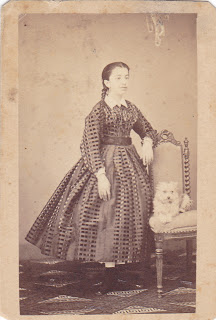
Dorso
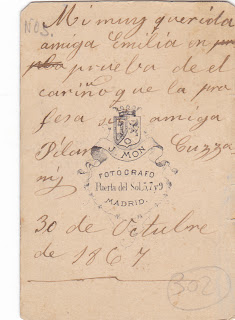
Dedicatoria:
A mi muy querida amiga Emilia en prueba de el cariño que la profesa su amiga Pilar Cuzzany. 30 de Octubre de 1867
Lleva el sello, impreso litografiado de
J. Mon
Fotógrafo Puerta del Sol 5,7,9
Madrid
Nacido en Asturias, cerca de Navia, se trasladó a Madrid, donde estudio Bellas Artes, para finalmente abrir uno de los más conocidos estudios fotográficos de Madrid
Juan Álvarez Mon y Álvarez-Acebedo, más conocido como Juan Mon, fue uno de los fotógrafos más importantes del siglo XIX, y desde este domingo tiene una placa en su recuerdo en la casa que lo vio nacer, en Talarén (Navia). El Ayuntamiento quiso reconocer así la figura de un pionero de la fotografía, que se desplazó a Madrid donde concluyó el Bachillerato y estudió Bellas artes, antes de instalar su estudio en la Puerta del Sol
Estudios fotográficos: Puerta del Sol
La gran mayoría de estas galerías fotográficas se instalaba en pleno centro de la ciudad. Únicamente en la Puerta del Sol, nos encontramos con siete o más estudios, según la época.
Wikipedia. Juan Alvarez Mon
.........Juan Álvarez de Mon y Álvarez-Acebedo o Juan Món, como él plasmó en los reversos de sus fotografías nació en Talarén, Asturias (España) el 26 de noviembre de 1828, y se trasladó a vivir a Madrid años después para terminar su vida y obra en Madrid donde fallecería el 23 de junio de 1898.
........Vivió y ejerció su profesión en Puerta del Sol nº 5, tenía su gabinete fotográfico en planta 4ª Izda. Por su estudio pasaron militares (oficiales, generales), damas, niños. Realizó distintos tipos de fotografía como las de personas caracterizadas y de distintos personajes. También realizó fotografía exterior, prueba de ello es la que se encuentra en la Exposición “De Madrid al cielo”, estas fotos fueron cedidas y se encuentran en la Universidad de Navarra, en el Legado Echagüe, o las subastadas del “lote de las 5 fotos del antiguo asilo de Madrid” y otras tantas que van saliendo, ya que también proyecto su trabajo en la prensa. Por aquel entonces fue vicepresidente del Centro Asturiano de Madrid, (revista mensual ilustrada nº 86, pág., 1 y 2, del 1 de febrero de 1892).
Wikipedia. Juan Alvarez Mon
......... Juan Álvarez Álvarez-Mon and Món Acebedo or Juan, as he reflected on the backs of his photographs was born in Talaren, Asturias (Spain) on November 26, 1828, and moved to live Madrid years later to finish his life and work in Madrid where he died on June 23, 1898.
He lived ........ and practiced his profession in Puerta del Sol # 5, had his 4th Cabinet Left photographic plant. For their study military (officers, generals), ladies, kids passed. He made various types of photography such as different characters characterized and people. He also made outside photography, proof is found in the Exhibition "From Madrid to Heaven", these photos were provided and are located at the University of Navarra, in the Legacy Echagiie or auctioned the "lot of 5 photos of the old asylum Madrid "and others which come out as they also project their work in the press. By then he was vice president of the Asturian Center of Madrid (illustrated monthly magazine # 86, p., 1 and 2, the February 1, 1892).
Leo la noticia de la próxima apertura al público de la colección de obras cubistas que Leonard A. Lauder donó al Museo Metropolitan de Nueva York
Cubism: The Leonard A. Lauder Collection
October 20, 2014–February 16, 2015
Cubism: The Leonard A. Lauder Collection at The Metropolitan Museum of Art will be the most important exhibition of the essential Cubists—Georges Braque (French, 1882–1963), Juan Gris (Spanish, 1887–1927), Fernand Léger (French, 1881–1955), and Pablo Picasso (Spanish, 1881–1973)—in more than 30 years. The exhibition and accompanying publication will trace the invention and development of Cubism using iconic examples from the Leonard A. Lauder
Pues bien acabo de encontrar un interesante documento de la Fundación Arte y Mecenazgo que recoge una conferencia de Leonard A. Lauder en Madrid en 2013 con el sugerente título
centrada en la historia del Whitney Museum y en su propia condición de coleccionista y donante de obras a su país. Destacar la numerosas fotos de excelentes obras de arte que contiene este pdf.
The most important part of building this collection for me was discipline. I had to avoid the temptation to follow the crowd, and focus only on the four major cubist artists: Picasso, Braque, Leger, and Gris.
How did I decide which museum to give the collection? 3-year journey to answer that question and in the process I increasingly refined my criteria. It could not be a snap decision
Recojo y destaco las palabras finales de esa conferencia
America has always had a history of giving back.
Why am I here? To try to encourage museum supporters and collectors that giving is not only important and necessary, it can be pleasurable and easy. $250 a year is what it once cost to be a Friend of the Whitney. Today, if museums celebrate their acquisitions, and look for more ways to encourage smaller donations from younger supporters, it will be much larger tomorrow.
Curioso saber que también coleccionaba postales.
The Postcard Age Selections from the Leonard A. Lauder Collection
Post anterior sobre Coleccionismo y Mecenazgo.
Estamos ante una de las imágenes más reproducidas de este personaje, pintor, escritor y coleccionista de arte , de la Cataluña de principios del siglo XIX.
Un pequeño dossier sobre la importancia de Rusiñol como coleccionistas de arte es
Exposición temporal en el Edificio Miramar. Sitges
....pinturas de Pablo Picasso, Isidre Nonell, Joaquim de Miró, Mas i Fondevila, Carles Casagemes, Ignacio Zuloaga, Miquel Utrillo y Anglada-Camarasa, entre otros, así como los dos Grecos que adquirió Santiago Rusiñol en París y que llegaron al Cau Ferrat en 1894
Desde Sitges, Rusiñol difundió la teoría del Arte Total, del arte entendido como una nueva religión. La celebración de las Fiestas Modernistas (1892-1899), la edificación del mismo Cau Ferrat (1893-1894) y la inauguración del monumento a El Greco (1898), convirtieron Sitges en la Meca del Modernismo y a Rusiñol en el sumo pontífice de este nuevo movimiento artístico y cultural. - See more at: http://www.museusdesitges.com/?page_id=26&lang=es#sthash.8iGd50BX.dpuf
Desde Sitges, Rusiñol difundió la teoría del Arte Total, del arte entendido como una nueva religión. La celebración de las Fiestas Modernistas (1892-1899), la edificación del mismo Cau Ferrat (1893-1894) y la inauguración del monumento a El Greco (1898), convirtieron Sitges en la Meca del Modernismo y a Rusiñol en el sumo pontífice de este nuevo movimiento artístico y cultural. - See more at: http://www.museusdesitges.com/?page_id=26&lang=es#sthash.8iGd50BX.dpuf

Sobre su vida y obra se encuentran numerosos datos en Internet
........Rusiñol (Barcelona, 1861 - Aranjuez, 1931) empezó su carrera como pintor. Formado en París, fue uno de los introductores y principales dinamizadores del movimiento modernista, inspirado en las corrientes simbolistas y del Art Nouveau europeos, con plataformas como el café Els Quatre Gats o las Fiestas Modernistas del Cau Ferrat en Sitges......
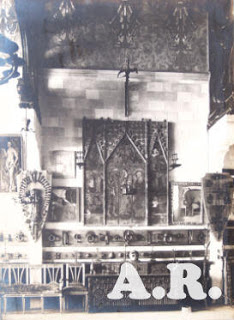
Fotografía Escuela de Arquitectura. Cau Ferrat Domenech i Montaner 1901
De su labor coleccionista nos lego el Museo del Cau Ferrat
La residencia de verano de Santiago Rusiñol y templo de su ideario de Arte Total acoge una importante colección de pintura de Rusiñol y de los artistas que, como él, preconizaban un arte moderno: Casas, Utrillo, Clarasó, Mas i Fondevila, Regoyos, Zuloaga, Picasso, Pitchot o Anglada Camarasa.
Archivo Mas-Foto Mas
Adolf Mas. Diccionario de fotografos españoles Ministerio de Cultura
.......Desde 1900 comenzó a reunir una gran cantidad de negativos en soporte cristal con los que formó el «Catàleg de l'exposició de fotografies de l'Arxiu Mas», centrándose especialmente en la reproducción de obras de arte y monumentos, formando primero el Inventari Iconogràfic de Catalunya y posteriormente el
Inventario Iconográfico de España.
.........A finales del siglo xix, se introdujo en el ambiente artístico del modernismo catalán, lo cual influenció toda su obra fotográfica posterior. Asistió a las tertulias del famoso café Els Quatre Gats, donde entabló amistad con el arquitecto Josep Puig i Cadafalch, quien lo vincularía con el Institut d’Estudis Catalans y con pintores como Ramón Casas y Santiago Rusiñol, cuyos trabajos retrató.
...... Para el Institut d’Estudis Catalans desarrolló el encargo de documentar la arqueología, el arte medieval y el ámbito rural en Cataluña. Realizó igualmente fotografías de actualidad, como las tomadas durante la Semana Trágica de Barcelona en 1907. En 1913 comenzó a colaborar con su hijo, Pelai Mas, y en los años 20 pudo ampliar los contenidos y medios técnicos del archivo. Fue entonces cuando desarrolló su Repertori Iconogràfic d’Espanya.
La foto pertenece al Archivo Mas que es uno de los más grandes archivos de fotografía. Fundado por Adolf Mas sus fondos se encuentran hoy en el Institut Ametller y cubren todas las regiones de España, incluidos monumentos y obras de arte.
........La información es accesible mediante tres índices: un índice historico-artístico (arquitectura y urbanismo / escultura / pintura y dibujo / libros iluminados / estampas / orfebrería y metalurgia / vidrio / cerámica / textil / arqueología), subdividido en períodos cronológicos y, en su caso, clasificadas por centros de creación artística y/o por artistas; un índice topográfico, ordenado por provincias, con una organización alfabética por poblaciones y una subdivisión en vistas generales, edificios religiosos y civiles, museos, instituciones y colecciones públicas y privadas; y un índice cronológico con fichas de referencia al número de negativo correspondiente. .
Adolf Mas Wikipedia
Photo depicting a view of a village street Malpartida de Cáceres, near the town of that name.
The photographer chooses a slightly elevated point of view and shows the architecture of the town with no sign of people. The picture seems to be made in summer at noon which would explain this circumstance.
The photo on the back carries the stamp of Photo Mas and belongs to the funds of Montaner i Simon publishing so very possibly contained in one of the many books or encyclopedias that this editorial did.
Pictures for this file are fairly easily in the market and are actually one of the big image files both architectures Spain, seen as people.
It is common to hold exhibitions of their funds focused on cities and autonomous communities what is allowing them to be better known and more appreciated photos of this file.
Wikipedia
Malpartida de Cáceres is a Spanish municipality in the province of Cáceres, Extremadura. Belonging to the Tajo-Salor County, the village is located in Caceres penillanura between elevations of Cáceres and Sierra de San Pedro. In 2007 it had 4445 inhabitants1 being the third largest city in its region.
It has been declared European Village of Storks and he has found some important archaeological remains.
The town is known for the natural area of Los Barrueco and the Vostell Malpartida Museum.
Adolf Mas. Dictionary of Spanish photographers Ministry of Culture
Since 1900 ....... began to gather a lot of negatives in glass holder with whom he formed the "l'Catàleg fotografies Exposure of Mas de l'Arxiu", especially focusing on the reproduction of works of art and monuments, forming the first Inventari Iconogràfic de Catalunya and then the
Iconographic Inventory Spain.
......... In the late nineteenth century, were introduced in the artistic atmosphere of Catalan Modernism, which influenced all his later photographic work. He attended the gatherings at the famous café Els Quatre Gats, where he became friends with the architect Josep Puig, who would link him to the Institut d'Estudis Catalans and painters such as Ramón Casas and Santiago Rusinol whose work portrayed.
For ...... Institut d'Estudis Catalans developed the custom document archeology, medieval art and rural areas in Catalonia. He also took photographs of today, such as those taken during the Tragic Week in Barcelona in 1907 In 1913 he began working with his son, Pelai But in the 20s and could expand the contents of the file and technical means. It was then that he developed his Repertori Iconogràfic d'Espanya.
ADOLF PELAI MAS I MAS, fotografs Vilanova D'ART A REPOSITORY
Barcelona photographed Adolf Mas
Adolf Mas Vic Episcopal Museum
Adolf Mas in Cer.es network
File photo belongs to Mas which is one of the largest photo files. Founded by Adolf More funds are now in the Institut Ametller and cover all regions of Spain, including monuments and works of art.
Institute Ametller
Information ........ is accessible by three indices: a historical-artistic index (architecture and urbanism / sculpture / painting and drawing / illuminated books / prints / jewelry and metalwork / glass / ceramic / textile / archeology) divided into chronological periods and, if classified by centers of artistic creation and / or artists; a topographic index, ordered by provinces, with an alphabetical organization and a subdivision populations in general views, religious and civic buildings, museums, institutions, and public and private collections; and a chronological index with reference to the number of tokens corresponding negative. .
Adolf Mas Wikipedia
Archive photos Turismo (Ministry of Culture) in http://www.mcu.es/archivos/MC/AGA/CME/CME.html
Bad luck Catalan Romanesque. Article from El País about the visit and graphic documentation of Catalan Romanesque by Adolf Gudiol and More in 1907
.In August 1907, Josep Puig, Josep Gudiol and photographer Adolf Mas traveled to the Aran Valley and the High Ribagorça for Romanesque architecture of these regions. The expedition returned with over 250 images and descriptions of 30 buildings. One hundred years later, Santiago Alcolea, director of the Institute of Hispanic Art Amatller Foundation, has returned to the buildings described in 1907 and Gudiol with notebook in hand, has proven that this heritage has vanished almost completely ..
The Numantino Museum opens exhibition "Castile and Leon photographic collections of the Institut d'Amatller Hispanic Art"
The origins of the Institut ...., which was founded in 1941 by Teresa Amatller nurtured to preserve the inventory of images Arxiu But back to the cultural environments of Catalonia, around 1900, when the professional photographer Adolfo Mas began systematic organization of photographic negatives, while with his camera on his shoulder was walking Peninsula photographic negatives for all types of moments. A set of graphic material soon found an application that was indispensable complement of integrated basic texts in magazines or publications of a very different order ..
Photojournalism and the print media in Catalonia: Gencat
Although we can not yet speak of photojournalists strictly, Amadeu Adolf Mas Mauri and were the first -retratistas professionals-photographers, who made inroads in the field of photojournalism and left a legacy of contemporary witnesses invaluable.
Bibliography
Variations in Spain. Photography and Art 1900-1980: Horacio Fernandez
Los museos se tienen que adaptar a los tiempos actuales de tal manera que las exposiciones que hacen tienen que invitarnos a ir.
Son muchas las formas de hacerlo, la primera evidentemente es la categoría del artista que, a su vez, está en relación directa con el gusto personal hacia su obra.
También hay otra forma mas generalista, más atractiva para la gente pero, a la vez,más arriesgada, es aquella que invita, no solo por la categoría del artista sino también por la capacidad de sorpresa, innovación y participación.
Volvemos a ver un museo que conocemos porque la propuesta hace un museo diferente, por las obras invitadas y la propia exposición permanente.
Esto es a lo que nos invita, a partir del próximo 26 de Septiembre el Museo Lázaro Galdiano
Reinterpretada I,
.........El arte sale a la calle a través de 16 cuadros de gran formato realizados por Enrique Marty, que se exhibirán en los lienzos del muro que rodea la Institución en la confluencia de las calles Serranoy María de Molina
..............En las salas, Marty “infiltrará” acuarelas, cuadros, esculturas
.........El catálogo, elemento fundamental de la exposición, consta de 400 ejemplares, la mitad de ellos intervenidos manualmente en la portada por el artista.
........“Reinterpretada I” es una propuesta singularmente atrevida, en la que su comisario Rafael Doctor
Es decir que sus pinturas son fotografías que luego copia.
-Siempre trabajo así: hago fotos o vídeos de los que luego saco fotos, o fotos que saco de mis tres películas de referencia: Don’t look now, de Nicolas Roeg, La llave secreta, de Tinto Brass, y Twin Peaks: fuego camina conmigo, de Lynch. Si realizo una instalación en la que hay cien cuadros, 50 pueden ser de películas y 50 de gente de mi entorno, pero el espectador no lo distingue. Es decir, que no hay diferencia entre película y vida real...
Rafael Doctor expuso sus fotografías en
TAXONOMÍA DEL CAOS
Gabinete de fotografías en torno al cuerpo en la colección de Rafael Doctor Roncero
Seguro que lo pasará bien y, sobre todo, NO OLVIDE LA CÁMARA DE FOTOS, luego, en casa, si quiere, juegue usted también con lo que vió, manipule, cambie y así volvera a disfrutar de la exposición
Le pongo estas fotos para animarle, tienen una mínima y sencilla manipulación, corresponden a una exposición anterior en el Lázaro Galdiano.
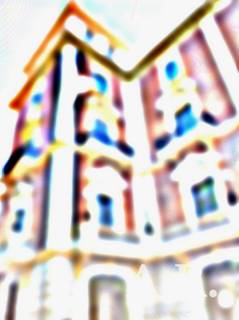


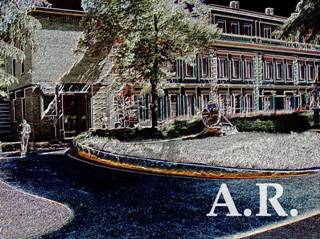



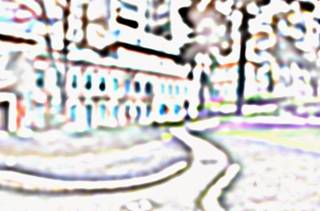
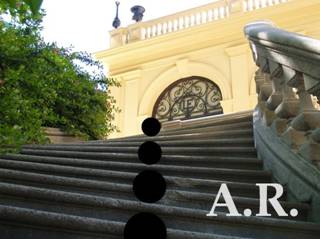
R201409
Recuerde que haciendo click en la foto se ve a mayor tamaño
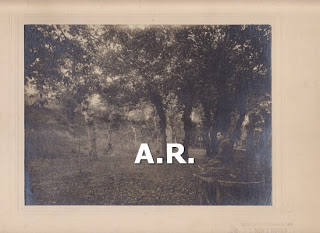
Actualización de un post de 2011
Foto Novas. Representa una persona sentada sobre un tronco de árbol en un bosque.
Es un gelatino bromuro de gran calidad
De este fotógrafo he conseguido muy pocos datos, solo los siguientes:
Lorenzo Novás, fotógrafo pontevedrés discípulo de Zagala, que forma sociedad con Sáez Mon, como socio capitalista, bajo el nombre Sáez Mon y Novás . Destacan sus trabajos con la Sociedad Arqueológica y el Museo de Pontevedra. En Los años 40 se vendió parte de su colección al Museo de Pontevedra, donde está depositada en la actualidad.
El Museo de Pontevedra me amplia estos datos a través de su web pues tiene un importante archivo gráfico
.......El Archivo gráfico de este museo, de incalculable valor documental, recoge un rico patrimonio icónico esencial para el estudio de la Historia de la Fotografía en Galicia..
Destacar en sus fondos
...... Sociedad Arqueológica de Pontevedra, antecesora de este Museo. Aquí debemos encuadrar la colección formada por la obra de Francisco Zagala (1842-1908), fotógrafo oficial de la mencionada Sociedad, para la que realizó numerosas fotografías que documentan de manera excepcional el patrimonio histórico-artístico de esta provincia.......
.....A su muerte en 1908, su discípulo y sucesor, Lorenzo Novás, se convierte en el nuevo fotógrafo de esta institución. En 1946 el Museo de Pontevedra compró su archivo fotográfico compuesto por más de 1000 placas de cristal, de las cuales, un gran número, habían pertenecido a su maestro Zagala. Estos negativos, unidos a los cientos de positivos originales de la Sociedad Arqueológica y a los procedentes de la colección Lois Teijeiro, convierten al Museo de Pontevedra en la Institución pública poseedora del mayor y más importante archivo fotográfico de fines del XIX que existe en Galicia...
...colección del fotógrafo Joaquín Pintos que trabajó en Pontevedra desde 1899 hasta su muerte acaecida en 1967..........
...obra de uno de los fotógrafos gallegos que goza de mayor reconocimiento, José Suárez (1902-1979)......
NUEVOS DATOS SOBRE ESTE FOTÓGRAFO
"Arredor do Mar"
Selección de fotografías del Museo de Pontevedra, que encuentra en el Museo do Mar de Galicia un marco muy apropiado para su exhibición.
La exposición abarca desde finales del s. XIX a mediados del s. XX. En ella se muestran 64 imágenes tomadas tanto por reconocidos fotógrafos profesionales, como Francisco Zagala, Lorenzo Novas,Joaquin Pintos, Otto Wunderlich, Enrique Sarabia o Jose Suarez,
El fotógrafo olvidado Faro de Vigo
Lorenzo Novás Rarís captó cientos de imágenes de la Pontevedra de principios del XX, muchas atribuídas a Zagala
.."Primero trabajó por libre, imagino que las copias y el laboratorio que usaba eran los de Zagala, y hacia 1910 creó una sociedad con otro fotógrafo bastante mayor que él, Cobián, Cobián y Novás, con sede en la calle Peregrina 23"
.....pero todas las imágenes a partir de 1901 para la Sociedad Arqueológica las hizo mi abuelo... Lo que sucede es que en algunas ponía como pie Zagala Fot, eso es porque Zagala le encargaba una imagen, mi abuelo hacía 5, una se la entregaba efectivamente a Zagala y él se quedaba con el resto".
....No solo Zagala le compró imágenes, también Ruth Matilda Anderson en el viaje que hizo a Galicia en 1924, si bien en este caso se comprometió a recordar cada vez que las reprodujese que pertenecían a la Sociedad Arqueológica.
.........Ésta encargaba sus fotos al estudio de Mon y Novás, siendo Mon el socio capitalista y sobrino de Casto Sampedro, presidente de la Arqueológica.
Acabo de leer en la prensa de hoy la excelente noticia, de la cual falta la confirmación, de la donación que hace Soledad Lorenzo de su colección de arte al Reina Sofía.
El Confidencial
La galerista Soledad Lorenzo, tal y como ha podido saber este periódico, donará su legado al Museo Nacional Centro de Arte Reina Sofía, compuesto de más de 400 piezas, entre pintura, escultura, vídeo, fotografía, instalaciones, etc. Durante los primeros cuatro años el conjunto se entrega como depósito y, a partir de entonces, la institución pública será la dueña de las obras de arte.
Me parece que para el mundo del arte y para la gente, para todo el mundo, es una noticia que permite sonreir y pensar que este mundo, el del arte, tiene grandes personas que se ocupan de los artistas en vida, en su faceta de galerista, pero que, al mismo tiempo para cuidar a esos mismos artistas se hizo coleccionista y culmina todo ello con la donación al Reina Sofía, es decir, a nosotros mismos.
Me alegra también mucho el destino que tiene pues este Museo, artísticamente hablando, tiene un gran director al frente como es Manuel Borja Villel que ha cambiado de cabo a rabo el discurso museistico, la exposición permanente especialmente, de manera radical a sus antecesores.
Ahora la comprensión artista-obra-espacio-tiempo es coherente, recuperó obras que estaban escondidas y, en lo que a mi gusto se refiere, incluyó la fotografía como parte normal, integrante, del arte del siglo XX.
La Galeria. El Galerista. Soledad Lorenzo Despedida. Coleccionismo. Lectura Recomendada Soledad Lorenzo Una vida con el arte.
En este último libro les recomiendo se fijen la actitud que toma al encontrarse con la incorporación de la fotografía a su galería , su afán para entenderla y mostrarla adecuadamente al público , su relación con la tirada en las fotos...
La Abadía de Melrose es uno de los monumentos más importantes de Escocia.
La abadía de Melrose, ubicada en la ciudad de Melrose, en Escocia, es un monasterio fundado en el año 1136 por monjes pertenecientes a la Orden del Císter, a petición del rey David I, rey de Escocia. Hoy en día la abadía se encuentra bajo la tutela del organismo administrativo especializado Historic Scotland.
Estamos ante una de las arquitecturas más fotografiadas en su época y uno de los lugares también mas visitados hoy en Escocia
Turismo de Escocia
The exterior of this magnificent ruin is decorated by unusual sculptures, including hobgoblins, cooks with ladles and a bagpipe playing pig.
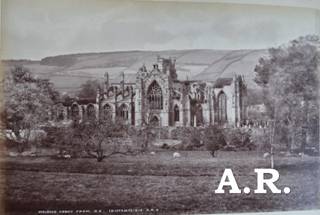
Melrose Abbey from S.E. Georges Washington Wilson

Melrose Abbey north transept and chancel G.W.W.
Wikipedia
St Mary's Abbey, Melrose is a part ruined monastery of the Cistercian order in Melrose, Roxburghshire, in the Scottish Borders.
It was founded in 1136 by Cistercian monks on the request of King David I of Scotland, and was the chief house of that order in the country, until the Reformation. It was headed by the Abbot or Commendator of Melrose. Today the abbey is maintained by Historic Scotland.
The east end of the abbey was completed in 1146. Other buildings in the complex were added over the next 50 years. The abbey was built in the Gothic manner, and in the form of a St. John's cross. A considerable portion of the abbey is now in ruins, though a structure dating from 1590 is maintained as a museum open to the public.
The Legacy of JamesValentine and George Washington Wilson
Excelente artículo en inglés que repasa la historia profesional de estos dos grandes estudios fotográficos con especial hincapié a los procedimientos de "marketing fotográfico de la época"
..................With a similar entrepreneurial spirit, in a bid to extend his initial portraits into the realm of greater production, Wilson had a stroke of marketing genius. In 1857 he created a montage of one-hundred and one of Aberdeen’s established middle class, identifying the who’s who of Aberdeen society, and simultaneously drawing attention to himself, to his clients and their elevated status. It sold extremely well, and in a single stroke this new promotion publicly cemented his relationship with existing clients while using their patronage and image as advertising, thus compelling other members of society, wishing for similar recognition, to visit his studio in the hopes of being included in the next year’s edition...........
Con un espíritu emprendedor similar, en un intento por extender sus retratos iniciales en el terreno de una mayor producción, Wilson tuvo un golpe de genio del marketing. En 1857 s creó un montaje de cien y una fotos de la clase media establecida de Aberdeen, identificar el quién es quién de la sociedad Aberdeen, y al mismo tiempo llamar la atención sobre sí mismo, a sus clientes y su elevado estatus. Se vendió muy bien, y de un solo golpe esta nueva promoción cimentó públicamente su relación con los clientes existentes durante el uso de su patrocinio y la imagen como la publicidad, por lo tanto obligar a otros miembros de la sociedad, con el deseo de reconocimiento similar, para visitar a su estudio con la esperanza de ser incluido en la edición del próximo año ...........
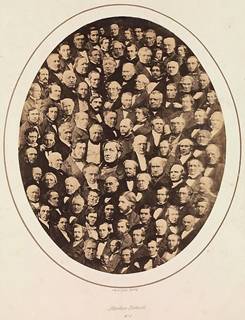
Metropolitan Museum
Date: 1857
Medium: Albumen silver print from glass negative
Dimensions: Image: 21.3 x 17.2 cm (8 3/8 x 6 3/4 in.) Mount: 37.7 x 30 cm (14 13/16 x 11 13/16 in.) Frame: 43.2 x 35.6 cm (17 x 14 in.)
Classification: Photographs
Credit Line: The Horace W. Goldsmith Foundation Fund, through Joyce and Robert Menschel, 2011
Accession Number: 2011.424
As the leading portrait photographer in Aberdeen, Scotland, Wilson had on file hundreds of negatives of the city’s professional elite. At the suggestion of his friend George Walker, a bookseller, Wilson cut out and pasted a selection of portrait heads in a tight oval, placing the largest and most important figures at the center; then he re-photographed the collage. Displayed in the window of Walker’s bookshop, the completed photomontage attracted immediate attention. Remarkably, some passersby did not realize that the photograph was composed of separate portraits, and Wilson and Walker received inquiries about “when & where all these people had been collected & photographed.”
Como fotógrafo de retrato principal en Aberdeen, Escocia, Wilson tuvo en archivos cientos de negativos de élite profesional de la ciudad. A sugerencia de su amigo George Walker, un librero, Wilson cortar y pegar una selección de cabezas retrato de un óvalo estrecho, colocando las figuras más grandes e importantes en el centro; luego volvió a fotografiar el collage. Se muestra en la ventana de la librería de Walker, el fotomontaje completado atrajo atención inmediata. Sorprendentemente, algunos transeúntes no se dieron cuenta de que la fotografía fue compuesta por retratos separados, y Wilson y Walker recibieron consultas sobre "cuando y donde todas estas personas habían sido recogidos y fotografiados."
The George Washington Wilson and Co. Photographic Collection
The George Washington Wilson and Co. photographic collection consists of over 37,000 glass plate negatives, produced by the Aberdeen firm between the second half of the nineteenth century and the early twentieth century
His patronage by the Royal Family during their visits to the Balmoral Estates began in 1854 when he was invited to take photographs of the Royal family in the grounds of Balmoral
He received the official appointment of Photographer Royal for Scotland in 1860 and his relationship with the Royal family continued throughout his career
http://www.abdn.ac.uk/historic/gww/index.htm
si utilizamos el motor de búsqueda con el término Spain aparecen 245 fotos que corresponden a diferentes ciudades de España.
George Washington Wilson exhibited his photos in these early exhibitions:
- 1855: British Association, Glasgow
- 1856: Edinburgh Photographic Society
- 1857: Art Treasures, Manchester
- 1858: Edinburgh Photographic Society
- 1859: British Association, Glasgow
- 1859: Glasgow Photographic Society
- 1861: London Photographic Society
- 1862: London International Exhibition
Wilson went on to build up a substantial business as a publisher of topographic views, principally of Scotland, where he travelled to Braemar, the Trossachs, the Falls of Clyde and many of the wilder parts of Scotland. His English output is small compared with his Scottish views, but Wilson made several journeys into England.
Born 7 February 1823; died 9 March 1893.
By 1880 he had established the largest publishing company of topographical views in Britain called "G.W. Wilson & Co.".
![[Recueil.] Scottish Scenery / G. W. Wilson](clip_image007_0092.jpg)
[Recueil.] Scottish Scenery / G. W. Wilson
Source: gallica.bnf.fr
La Fundación Joaquín Díaz tiene fondos fotográficos de gran entidad, destacando entre ellos parte del Archivo Kindel.
Pero dispone también de una publicación en web titulada
Enciclopedia de la Industria y el Comercio. Donde, haciendo búsqueda con la palabra fotografía, vemos breves datos de muchos fotógrafos de Valladolid o que trabajaron alguna vez en Valladolid.
Algunos ejemplos
Adolfo Miaja Eguren
Bonnevide
Idelmón
Juan Peinado
Pica Groom
Sancho
La Castellana. Enrique Marquerie
Sobre este último véase la publicación de los fondos de la fototeca del Museo del Pueblo de Asturias
Fondo Marquerie
Los fotógrafos representados en la fototeca de este Museo se pueden ver en la Guia de la Fototeca, que se puede descargar
Para facilitar la difusión de los fondos y colecciones de la Fototeca de Asturias y con el objeto de difundir su contenido y forma de organización, el Muséu del Pueblu d'Asturies ofrece la posibilidad de descargar la Guía de la Fototeca de Asturias en la que se proporciona una descripción de todos ellos. Si se desea obtener información más detallada sobre cada fondo o colección en particular, es mejor acceder a los contenidos específicos que ofrecemos desde esta misma web (Fondos y Colecciones). Tanto el documento conjunto como los individuales están en formato pdf, de libre descarga, con lo que se pueden realizar búsquedas por cualquier término utilizando el buscador de Adobe Acrobat.
1Constantino Suárez
2 Fritz Krüger
3 José Ramón Lueje
4 Modesto Montoto
5 Arturo Truan
6 Miguel Rojo Borbolla
7 Valentín Vega
8 Baltasar Cue
9 Julio Peinado
10 Juan Evangelista Canellada
11 Manuel Espín
12 Casimiro López Bravo
13 Félix Hatre
14 Benjamín R. Membiela
15 Laureano Vinck
16 Lorenzo Cabeza
17 Marceliano Cuesta
18 Francisco Ruiz Tilve
19 Julio León Costales
20 Eladio Begega
21 Aletoscopio di Venecia
22 Gonzalo del Campo y del Castillo
23 Galé
24 Pedro Alonso Rebollar
25 Emilio Alonso
26 La Voz de Asturias
27 Rafael María de Labra
28 Tipos populares mexicanos
29 Luis y Joaquín Aranda Iriarte
30 María Cátedra
31 El Progreso de Asturias
32 Pedro García Mercado
33 Enrique Marquerie
34 Luis Vallet de Montano
35 Gonzalo Vega
36 Luis Cernuda Jumbo
37 William Selkirk
38 Alarde
39 Antonio Rodríguez-San Pedro
40 Carlos Roces Felgueroso
41 Ramón García Duarte
42 Foto Gómez
43 Joaquín García Cuesta
1Asturianos en América
2 Tarjetas postales de Asturias
3 Tarjetas postales de Gijón
4 Álbumes de fotografías
5 Fotografía post mortem
en (Google translator)
The Joaquín Díaz Foundation has large photographic backgrounds entity, among them the Kindel Archive.
But it also has a web publication entitled
Encyclopedia of Industry and Commerce. Where, by searching with the word picture, we see brief details of many photographers who worked Valladolid or sometime in Valladolid.
examples
Adolfo Miaja Eguren
Bonnevide
Idelmón
Juan Peinado
Pica Groom
Sancho
La Castellana. Enrique Marquerie
On the latter see the release of funds from the library of the Museum of Asturias
Marquerie Fund
The photographers represented in the library of the Museum can be seen in the Photo Library Guide, which can be downloaded
To facilitate the dissemination of funds and collections of Asturias Photo Library and in order to spread their content and form of organization, the Museum of Asturias pueblu offers the possibility to download the Guide to Photo Library Asturias in which provides a description of all of them. If you want more detailed information about each fund or collection in particular is better access specific contents offered from this website (Funds and Collections). Both the whole document as the individual are in pdf format, free download, so you can search for any term using the search box Adobe Acrobat.
1Constantino Suárez
2 Fritz Krüger
3 José Ramón Lueje
4 Modesto Montoto
5 Arturo Truan
6 Borbolla Miguel Rojo
7 Valentine Vega
8 Baltasar Cue
July 9 Hairstyle
10 Juan Evangelista Canellada
11 Manuel Espín
12 Casimiro López Bravo
13 Felix Hatre
14 Benjamin R. Membiela
15 Laureano Vinck
16 Lorenzo Head
17 Marceliano Cuesta
18 Francisco Ruiz Tilve
July 19 León Costales
20 Eladio Begega
21 Aletoscopio di Venice
22 Gonzalo Castillo del Campo and
23 Gale
24 Pedro Alonso Rebollar
25 Emilio Alonso
26 La Voz de Asturias
27 Rafael María de Labra
28 Popular Types Mexican
29 Luis Iriarte and Joaquin Aranda
30 Mary Chair
31 The Progress of Asturias
32 Pedro García Market
33 Enrique Marquerie
34 Vallet Luis Montano
35 Gonzalo Vega
36 Luis Cernuda Jumbo
37 William Selkirk
38 boast
39 Antonio Rodríguez-San Pedro
40 Carlos Roces Felgueroso
41 Ramon Garcia Duarte
42 Photo Gomez
43 Joaquín García Cuesta
Esta disponible, para ver en red, el catálogo de la próxima subasta de Sotheby's. Como siempre es bueno revisar esta información por la calidad de la fotografía y, ¿por qué no decirlo?, para saber los precios de la fotografía .........................americana.
Ej.
Lewis W. Hine
1874-1940
'MECHANIC AT STEAM PUMP IN ELECTRIC POWER HOUSE'
lot 58
http://www.sothebys.com/en/auctions/ecatalogue/2014/photographs-n09204/lot.58.html
Wendell MacRae
1896-1980
FISH-EYE VIEW OF ROCKEFELLER CENTER
http://www.sothebys.com/en/auctions/ecatalogue/2014/photographs-n09204/lot.65.html
Berenice Abbott
1898-1991
'HENRY STREET'
http://www.sothebys.com/en/auctions/ecatalogue/2014/photographs-n09204/lot.67.html
Walker Evans
'GOTHIC GATE COTTAGE NEAR POUGHKEEPSIE, NEW YORK'
http://www.sothebys.com/en/auctions/ecatalogue/2014/photographs-n09204/lot.75.html
Dorothea Lange
NO WORK, CALIPATRIA, FEBRUARY 25, 1937
http://www.sothebys.com/en/auctions/ecatalogue/2014/photographs-n09204/lot.76.html
Eugène Atget/Berenice Abbott
'ATGET'
http://www.sothebys.com/en/auctions/ecatalogue/2014/photographs-n09204/lot.78.html
En fin, lo dicho, para disfrutar, aprender de y sobre la fotografía antigua que también es válido para la fotografía de hoy
Excelente guía sobre fotografía publicada por uno de los mejores centros de fotografía del mundo:.International Center of Photography
Es de descarga libre.
It is with great pleasure that we celebrate the publication of the International Center of Photography's Focus on Photography: A Curriculum Guide. The guide is an exceptional resource for those at all levels of experience in teaching and in photography, designed to inform educators about the many possibilities and interdisciplinary applications of photographic education in school and after-school settings (grades K-12). Written by museum educator and former ICP Coordinator of Community Programs, Cynthia Way, the guide draws on ICP's long-term experience and translates its practice for a much broader audience.
http://www.icp.org/museum/education/teacher-resources
Foto que representa una vista de una calle del pueblo de Malpartida de Cáceres, muy cerca de la ciudad del mismo nombre.
El fotógrafo elige un punto de vista ligeramente elevado y nos muestra la arquitectura del pueblo sin rastro de personas. La foto parece hecha en verano al mediodia lo que explicaría esta circunstancia.
La foto lleva al dorso el sello de Foto Mas y pertenece a los fondos de la editorial Montaner i Simón por lo cual muy posiblemente figura en alguno de los numerosos libros o enciclopedias que dicha editorial realizó.
Las fotos de este archivo se encuentran con cierta facilidad en el mercado y son, realmente, uno de los grandes archivos de imagen de España tanto de sus arquitecturas, vistas como de la gente.
Es frecuente la realización de exposiciones de sus fondos centradas en ciudades o comunidades autonomas lo que esta permitiendo que sean mejor conocidas y más apreciadas las fotos de este archivo.
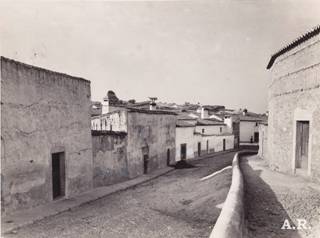
Wikipedia
Malpartida de Cáceres es un municipio español de la provincia de Cáceres, Extremadura. Perteneciente a la Comarca de Tajo-Salor, el pueblo está ubicado en la penillanura cacereña entre las elevaciones de Cáceres y la sierra de San Pedro. En 2007 tenía 4445 habitantes1 siendo el tercer municipio más poblado de su comarca.
Está declarado Pueblo Europeo de las Cigüeñas y en él se han hallado algunos restos arqueológicos importantes.
El municipio es conocido por el espacio natural de Los Barruecos y por el Museo Vostell Malpartida.
Adolf Mas. Diccionario de fotografos españoles Ministerio de Cultura
.......Desde 1900 comenzó a reunir una gran cantidad de negativos en soporte cristal con los que formó el «Catàleg de l'exposició de fotografies de l'Arxiu Mas», centrándose especialmente en la reproducción de obras de arte y monumentos, formando primero el Inventari Iconogràfic de Catalunya y posteriormente el
Inventario Iconográfico de España.
.........A finales del siglo xix, se introdujo en el ambiente artístico del modernismo catalán, lo cual influenció toda su obra fotográfica posterior. Asistió a las tertulias del famoso café Els Quatre Gats, donde entabló amistad con el arquitecto Josep Puig i Cadafalch, quien lo vincularía con el Institut d’Estudis Catalans y con pintores como Ramón Casas y Santiago Rusiñol, cuyos trabajos retrató.
...... Para el Institut d’Estudis Catalans desarrolló el encargo de documentar la arqueología, el arte medieval y el ámbito rural en Cataluña. Realizó igualmente fotografías de actualidad, como las tomadas durante la Semana Trágica de Barcelona en 1907. En 1913 comenzó a colaborar con su hijo, Pelai Mas, y en los años 20 pudo ampliar los contenidos y medios técnicos del archivo. Fue entonces cuando desarrolló su Repertori Iconogràfic d’Espanya.
La foto pertenece al Archivo Mas que es uno de los más grandes archivos de fotografía. Fundado por Adolf Mas sus fondos se encuentran hoy en el Institut Ametller y cubren todas las regiones de España, incluidos monumentos y obras de arte.
........La información es accesible mediante tres índices: un índice historico-artístico (arquitectura y urbanismo / escultura / pintura y dibujo / libros iluminados / estampas / orfebrería y metalurgia / vidrio / cerámica / textil / arqueología), subdividido en períodos cronológicos y, en su caso, clasificadas por centros de creación artística y/o por artistas; un índice topográfico, ordenado por provincias, con una organización alfabética por poblaciones y una subdivisión en vistas generales, edificios religiosos y civiles, museos, instituciones y colecciones públicas y privadas; y un índice cronológico con fichas de referencia al número de negativo correspondiente. .
Adolf Mas Wikipedia
En (google translator)
Photo depicting a view of a village street Malpartida de Cáceres, near the town of that name.
The photographer chooses a slightly elevated point of view and shows the architecture of the town with no sign of people. The picture seems to be made in summer at noon which would explain this circumstance.
The photo on the back carries the stamp of Photo Mas and belongs to the funds of Montaner i Simon publishing so very possibly contained in one of the many books or encyclopedias that this editorial did.
Pictures for this file are fairly easily in the market and are actually one of the big image files both architectures Spain, seen as people.
It is common to hold exhibitions of their funds focused on cities and autonomous communities what is allowing them to be better known and more appreciated photos of this file.
Wikipedia
Malpartida de Cáceres is a Spanish municipality in the province of Cáceres, Extremadura. Belonging to the Tajo-Salor County, the village is located in Caceres penillanura between elevations of Cáceres and Sierra de San Pedro. In 2007 it had 4445 inhabitants1 being the third largest city in its region.
It has been declared European Village of Storks and he has found some important archaeological remains.
The town is known for the natural area of Los Barrueco and the Vostell Malpartida Museum.
Adolf Mas. Dictionary of Spanish photographers Ministry of Culture
Since 1900 ....... began to gather a lot of negatives in glass holder with whom he formed the "l'Catàleg fotografies Exposure of Mas de l'Arxiu", especially focusing on the reproduction of works of art and monuments, forming the first Inventari Iconogràfic de Catalunya and then the
Iconographic Inventory Spain.
......... In the late nineteenth century, were introduced in the artistic atmosphere of Catalan Modernism, which influenced all his later photographic work. He attended the gatherings at the famous café Els Quatre Gats, where he became friends with the architect Josep Puig, who would link him to the Institut d'Estudis Catalans and painters such as Ramón Casas and Santiago Rusinol whose work portrayed.
For ...... Institut d'Estudis Catalans developed the custom document archeology, medieval art and rural areas in Catalonia. He also took photographs of today, such as those taken during the Tragic Week in Barcelona in 1907 In 1913 he began working with his son, Pelai But in the 20s and could expand the contents of the file and technical means. It was then that he developed his Repertori Iconogràfic d'Espanya.
ADOLF PELAI MAS I MAS, fotografs Vilanova D'ART A REPOSITORY
Barcelona photographed Adolf Mas
Adolf Mas Vic Episcopal Museum
Adolf Mas in Cer.es network
File photo belongs to Mas which is one of the largest photo files. Founded by Adolf More funds are now in the Institut Ametller and cover all regions of Spain, including monuments and works of art.
Institute Ametller
Information ........ is accessible by three indices: a historical-artistic index (architecture and urbanism / sculpture / painting and drawing / illuminated books / prints / jewelry and metalwork / glass / ceramic / textile / archeology) divided into chronological periods and, if classified by centers of artistic creation and / or artists; a topographic index, ordered by provinces, with an alphabetical organization and a subdivision populations in general views, religious and civic buildings, museums, institutions, and public and private collections; and a chronological index with reference to the number of tokens corresponding negative. .
Adolf Mas Wikipedia
Archive photos Turismo (Ministry of Culture) in http://www.mcu.es/archivos/MC/AGA/CME/CME.html
Bad luck Catalan Romanesque. Article from El País about the visit and graphic documentation of Catalan Romanesque by Adolf Gudiol and More in 1907
.In August 1907, Josep Puig, Josep Gudiol and photographer Adolf Mas traveled to the Aran Valley and the High Ribagorça for Romanesque architecture of these regions. The expedition returned with over 250 images and descriptions of 30 buildings. One hundred years later, Santiago Alcolea, director of the Institute of Hispanic Art Amatller Foundation, has returned to the buildings described in 1907 and Gudiol with notebook in hand, has proven that this heritage has vanished almost completely ..
The Numantino Museum opens exhibition "Castile and Leon photographic collections of the Institut d'Amatller Hispanic Art"
The origins of the Institut ...., which was founded in 1941 by Teresa Amatller nurtured to preserve the inventory of images Arxiu But back to the cultural environments of Catalonia, around 1900, when the professional photographer Adolfo Mas began systematic organization of photographic negatives, while with his camera on his shoulder was walking Peninsula photographic negatives for all types of moments. A set of graphic material soon found an application that was indispensable complement of integrated basic texts in magazines or publications of a very different order ..
Photojournalism and the print media in Catalonia: Gencat
Although we can not yet speak of photojournalists strictly, Amadeu Adolf Mas Mauri and were the first -retratistas professionals-photographers, who made inroads in the field of photojournalism and left a legacy of contemporary witnesses invaluable.
Bibliography
Variations in Spain. Photography and Art 1900-1980: Horacio Fernandez
We see now the Vanderbilt's residences in the Halic collection ( biggest holder of Albert Levy's photographs).
Historic Architecture and Landscape Image (HALIC):
Consisting of approximately 11,000 images that document the architecture, landscape and urban planning of sites across the United States - with a particular emphasis on Chicago and its suburbs - and, to a lesser extent, internationally, The Historic Architecture and Landscape Image collection, or HALIC, contains mounted photographic prints, lantern slides (both black and white and hand-colored), and postcards dating from the 1860s to the 1970s.
In the collection they are several photographs of Vanderbil's houses.
You can see the photographs in the web.
Using the zoom tool you can see each photograph with great detail

Title/Project Name Vanderbilt, Cornelius, II, Residence |
|||||||
Alternate Title/Project Name |
|||||||
Street Address/Neighborhood |
|||||||
City |
|||||||
State/Province |
|||||||
Country |
|||||||
Date Designed or Built |
|||||||
Architect/Designer/Creator |
|||||||
Date of View |
|||||||
View or Detail Type |
|||||||
Image Notes |
perspective view from across the street; from Albert Levy's Architectural Photographic Series, Series 16, No. 78 |
Link Halic
Website URL http://www.artic.edu/aic/libraries/research/specialcollections/digitalcollections/allcollections.html
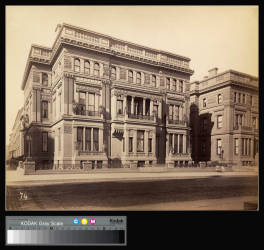
Title/Project Name |
|
Alternate Title/Project Name |
|
Street Address/Neighborhood |
|
City |
|
State/Province |
|
Country |
|
Date Designed or Built |
|
Architect/Designer/Creator |
|
Additional Architect or Designer |
|
Date of View |
|
View or Detail Type |
|
Image Notes |
south facade; from Albert Levy's Architectural Photographic Series, Series 16, No. 74 |
Link Halic
Website URL http://www.artic.edu/aic/libraries/research/specialcollections/digitalcollections/allcollections.html
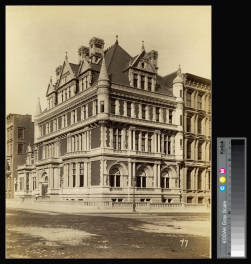
Title/Project Name |
|
Alternate Title/Project Name |
|
Street Address/Neighborhood |
|
City |
|
State/Province |
|
Country |
|
Date Designed or Built |
|
Architect/Designer/Creator |
|
Date of View |
|
View or Detail Type |
|
Image Notes |
view from across the corner; from Albert Levy's Architectural Photographic Series, Series 16, No. 77 |
Link Halic
Website URL http://www.artic.edu/aic/libraries/research/specialcollections/digitalcollections/allcollections.html

Title/Project Name |
|
Alternate Title/Project Name |
|
Street Address/Neighborhood |
|
City |
|
State/Province |
|
Country |
|
Date Designed or Built |
|
Architect/Designer/Creator |
|
Additional Architect or Designer |
|
Date of View |
|
View or Detail Type |
|
Image Notes |
north side; from Albert Levy's Architectural Photographic Series, Series 16, No. 65 |
Link Halic
Website URL http://www.artic.edu/aic/libraries/research/specialcollections/digitalcollections/allcollections.html

Title/Project Name |
|
Street Address/Neighborhood |
|
City |
|
State/Province |
|
Country |
|
Date Designed or Built |
|
Architect/Designer/Creator |
|
Date of View |
|
View or Detail Type |
|
Image Notes |
demolished 1925; from Albert Levy's Architectural Photographic Series, Series 16, No. 76 |
Link Halic
Website URL http://www.artic.edu/aic/libraries/research/specialcollections/digitalcollections/allcollections.html
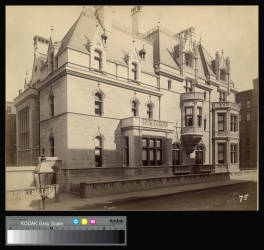
Title/Project Name |
|
Street Address/Neighborhood |
|
City |
|
State/Province |
|
Country |
|
Date Designed or Built |
|
Architect/Designer/Creator |
|
Date of View |
|
View or Detail Type |
|
Image Notes |
perspective view; demolished 1925; from Albert Levy's Architectural Photographic Series, Series 16, No. 75 |
Link Halic
Website URL http://www.artic.edu/aic/libraries/research/specialcollections/digitalcollections/allcollections.html
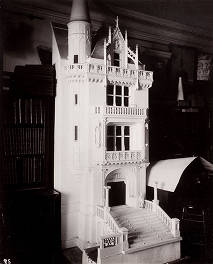
Title/Project Name |
|
Street Address/Neighborhood |
|
City |
|
State/Province |
|
Country |
|
Date Designed or Built |
|
Architect/Designer/Creator |
|
Date of Object |
|
View or Detail Type |
|
Image Notes |
"Albert Levy's Photographic Series of Modern American Architecture. First series : Private city dwellings"
Link Halic
Website URL www.artic.edu/aic/libraries/research/specialcollections/digitalcollections/allcollections.html
Objetif Calvados
Un siecle de photographie aux archives de Calvados 1850-1950
LEVY, Albert
(1847 – vers 1905), professionnel.
Photographe d’architecture, Asnières.
Actif aux Etats-Unis, 1873 – années 1880 ;
en France, années 1880 – vers 1905.
Pequeña y bonita foto que representa dos edificios que,prácticamento son uno-Teatro Jovellanos y Café Dindurra- de Gijón con niños delante de los mismos.
La foto no lleva dato alguno de su autor, por los vestidos de los niños en primer plano se puede fechar hacia 1910.
Historia
En julio de 1899 Gijón inaugura un teatro que, situado en pleno centro de la ciudad y con un aforo para 1300 espectadores, pretende dotar a Gijón de un espacio físico donde la cultura y el ocio tengan la importancia que reclama una ciudad en pleno desarrollo, en acelerado progreso tanto urbanístico como social y económico. Ha nacido el Teatro Dindurra, el futuro Teatro Jovellanos. El empresario Manuel Sánchez Dindurra ha corrido con los gastos, Mariano Marín, uno de los arquitectos más prestigiosos de la época, ha trazado su arquitectura.
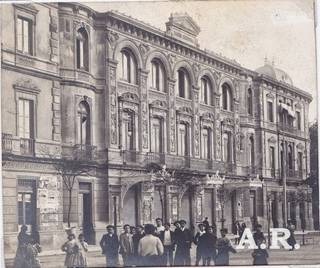
Este edificio visto en 2012, otro ángulo.
Hoy está en proceso de rehabilitación.

2023: enero - febrero - marzo - abril - mayo - junio
2022: enero - febrero - marzo - abril - mayo - junio - julio - agosto - septiembre - octubre - noviembre - diciembre
2021: enero - febrero - marzo - abril - mayo - junio - julio - agosto - septiembre - octubre - noviembre - diciembre
2020: enero - febrero - marzo - abril - mayo - junio - julio - agosto - septiembre - octubre - noviembre - diciembre
2019: enero - febrero - marzo - abril - mayo - junio - julio - agosto - septiembre - octubre - noviembre - diciembre
2018: enero - febrero - marzo - abril - mayo - junio - julio - agosto - septiembre - octubre - noviembre - diciembre
2017: enero - febrero - marzo - abril - mayo - junio - julio - agosto - septiembre - octubre - noviembre - diciembre
2016: enero - febrero - marzo - abril - mayo - junio - julio - agosto - septiembre - octubre - noviembre - diciembre
2015: enero - febrero - marzo - abril - mayo - junio - julio - agosto - septiembre - octubre - noviembre - diciembre
2014: enero - febrero - marzo - abril - mayo - junio - julio - agosto - septiembre - octubre - noviembre - diciembre
2013: enero - febrero - marzo - abril - mayo - junio - julio - agosto - septiembre - octubre - noviembre - diciembre
2012: enero - febrero - marzo - abril - mayo - junio - julio - agosto - septiembre - octubre - noviembre - diciembre
2011: enero - febrero - marzo - abril - mayo - junio - julio - agosto - septiembre - octubre - noviembre - diciembre
2010: enero - febrero - marzo - abril - mayo - junio - julio - agosto - septiembre - octubre - noviembre - diciembre
2009: enero - febrero - marzo - abril - mayo - junio - julio - agosto - septiembre - octubre - noviembre - diciembre
2008: marzo - mayo - junio - julio - agosto - septiembre - octubre - noviembre - diciembre